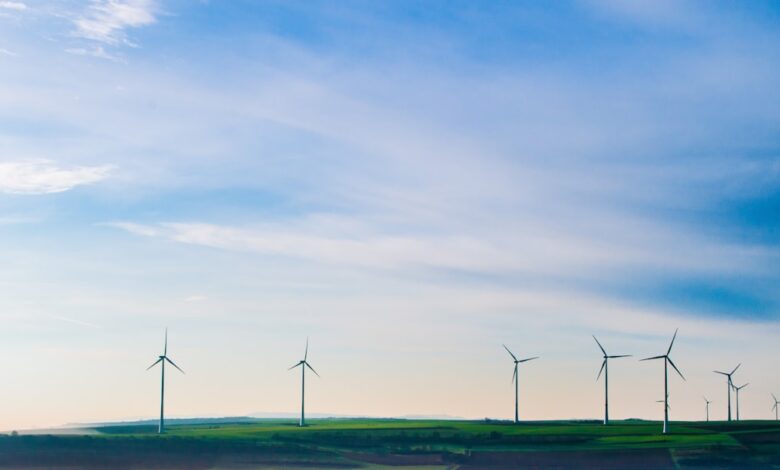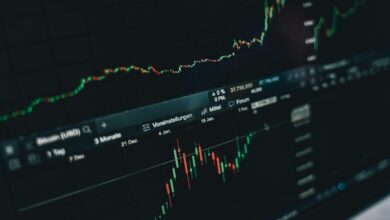Powering the Future: Unleashing Innovations in Energy Efficiency for Maximum Savings

In an era where the need for sustainable practices is more pressing than ever, innovations in energy efficiency are emerging as pivotal solutions for both economic stability and environmental stewardship. As businesses and households seek to reduce their energy consumption, a wave of breakthrough technologies is revolutionizing the way we utilize energy, leading to significant cost savings and a reduced carbon footprint. This article delves into the latest advancements in energy efficiency, exploring how these innovations not only enhance our daily lives but also bolster the bottom line for consumers and companies alike. Furthermore, we will examine the critical role of policy and investment in fostering a landscape where sustainable solutions can thrive, ensuring that the pursuit of energy efficiency remains a priority for future generations. Join us as we uncover the transformative potential of energy efficiency innovations and their implications for a sustainable economy.
- revolutionizing-energy-use:-breakthrough-technologies-in-efficiency“>
1. Revolutionizing Energy Use: Breakthrough Technologies in Efficiency
In recent years, the drive towards energy efficiency has spurred a wave of innovative technologies that are fundamentally transforming how we consume energy across various sectors. These breakthroughs not only promise to reduce energy expenditure but also contribute significantly to environmental sustainability by lowering greenhouse gas emissions.
One of the most notable advancements is the development of smart grids, which leverage artificial intelligence and machine learning to optimize energy distribution and consumption. Smart grids enable real-time monitoring of energy use, allowing utilities and consumers to adjust their consumption patterns based on demand fluctuations. This dynamic responsiveness leads to reduced peak loads and minimizes waste, ultimately resulting in lower energy costs.
In the realm of building management, energy-efficient technologies such as advanced HVAC systems and smart thermostats have gained traction. These systems utilize sensors and data analytics to adjust heating, cooling, and ventilation in response to occupancy and weather conditions. By optimizing these processes, buildings can achieve substantial energy savings—often reducing consumption by 20% to 50%. Additionally, the integration of energy management software allows building operators to track energy use patterns, identify inefficiencies, and implement corrective measures swiftly.
The evolution of lighting technology is another area of significant innovation. LED lighting, coupled with smart controls, offers a remarkable leap forward in energy efficiency compared to traditional incandescent bulbs. LEDs consume up to 80% less energy and last significantly longer, translating into substantial savings on both energy bills and replacement costs. Furthermore, by integrating lighting systems with occupancy sensors and daylight harvesting technologies, businesses can further enhance their energy savings by ensuring that lights are only used when necessary.
On a larger scale, innovations in renewable energy sources, such as solar panels with improved photovoltaic efficiency and energy storage solutions, are revolutionizing energy use. Advancements in battery technology, particularly lithium-ion and emerging solid-state batteries, have made it possible to store excess energy generated during peak production times for later use. This capability not only enhances the reliability of renewable energy systems but also allows consumers to leverage stored energy during peak pricing periods, thereby reducing overall costs.
Moreover, the integration of energy-efficient technologies in industrial processes is yielding significant economic benefits. Industries are adopting advanced manufacturing techniques and machinery that consume less energy while maintaining or increasing productivity. For instance, energy-efficient motors and variable frequency drives allow for precise control over machinery, reducing energy consumption without sacrificing output.
As these breakthrough technologies continue to evolve, they present a compelling case for investment in energy efficiency. The potential for cost savings, combined with the environmental imperative to reduce energy consumption, positions these innovations as critical components of a sustainable energy future. Embracing these advancements not only enhances operational efficiency but also paves the way for a more resilient and economically viable energy landscape.
In recent years, innovations in energy efficiency have emerged as a critical component in addressing the global energy crisis and mitigating climate change. These advancements not only contribute to a more sustainable future but also present significant opportunities for cost savings across various sectors. From residential to industrial applications, the integration of cutting-edge technologies and practices has the potential to substantially reduce energy consumption and, consequently, operating costs.
One of the most promising innovations is the development of smart building technologies, which leverage the Internet of Things (IoT) to optimize energy use. Smart thermostats, lighting systems, and energy management software allow for real-time monitoring and adjustments based on occupancy and usage patterns. For example, smart thermostats can learn user preferences and minimize energy waste by automatically adjusting heating and cooling settings when spaces are unoccupied. This level of automation not only enhances comfort but also leads to significant reductions in energy bills.
In the industrial sector, advancements in process optimization and energy recovery systems have transformed energy management practices. Technologies such as advanced sensors and artificial intelligence (AI) are being employed to monitor machinery and identify inefficiencies in real-time. By optimizing production processes and reducing unnecessary energy consumption, companies can achieve considerable cost savings while also extending the lifespan of their equipment. Additionally, energy recovery systems that capture and repurpose waste heat can further enhance efficiency, leading to lower operational costs.
The emergence of energy-efficient appliances and equipment has also played a vital role in driving down energy usage. Appliances that meet stringent efficiency standards consume less electricity and water, resulting in lower utility bills for consumers and businesses alike. Furthermore, the transition to LED lighting has revolutionized the way we illuminate spaces, offering up to 80% energy savings compared to traditional incandescent bulbs. As these technologies become more mainstream, the cumulative impact on energy costs can be substantial.
Government policies and incentives are also fostering energy efficiency innovations. Programs that offer rebates for energy-efficient upgrades or tax credits for renewable energy installations encourage both consumers and businesses to invest in technologies that reduce energy consumption. As awareness of the financial benefits grows, more stakeholders are likely to adopt these practices, leading to widespread improvements in energy efficiency.
Overall, the potential for cost savings through innovations in energy efficiency is vast. By embracing new technologies and practices, individuals and organizations can not only lower their energy expenses but also contribute to a more sustainable and resilient energy future. The intersection of economic incentives and environmental responsibility underscores the importance of continued investment in energy efficiency innovations as a pathway toward a greener economy.





